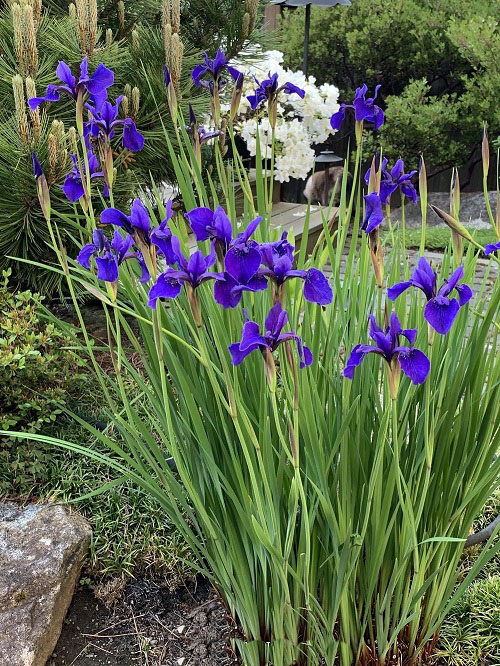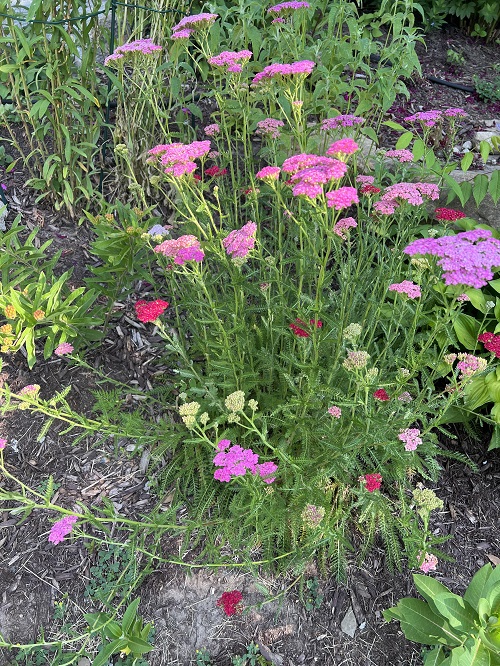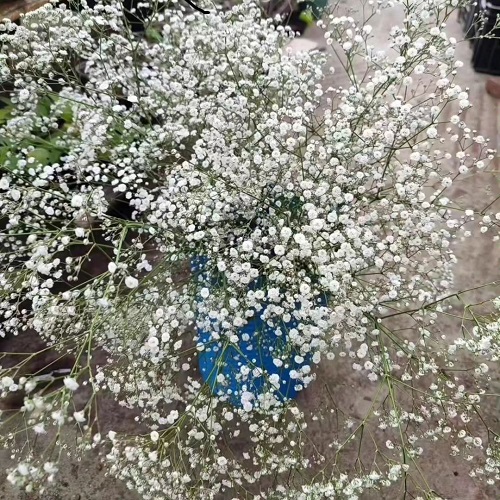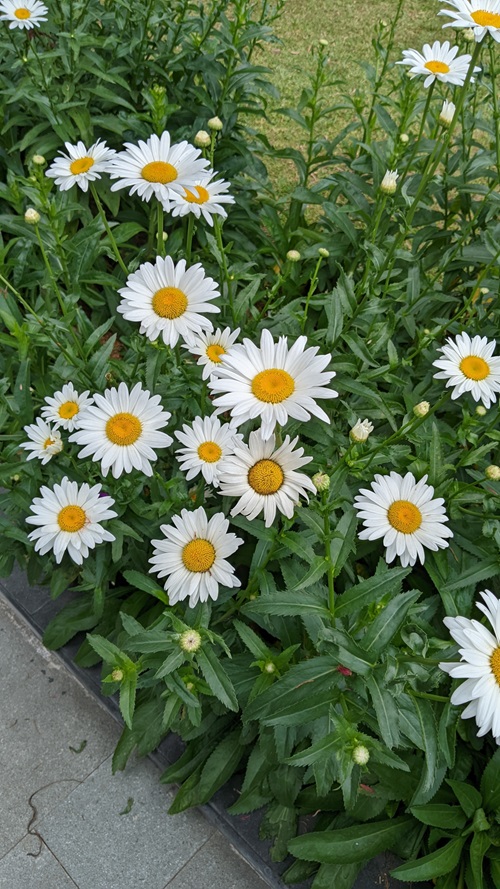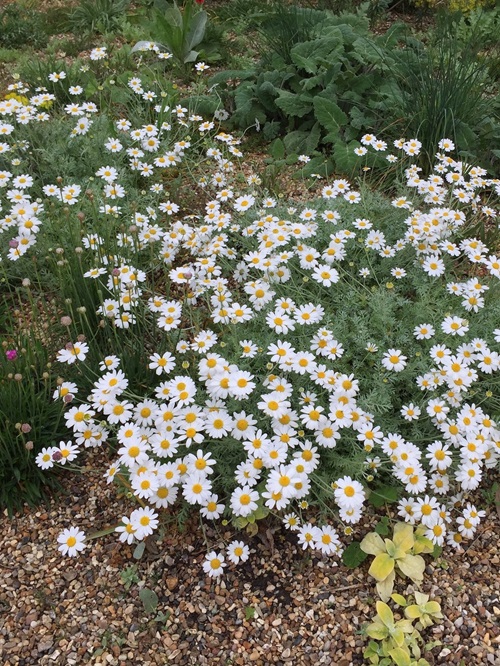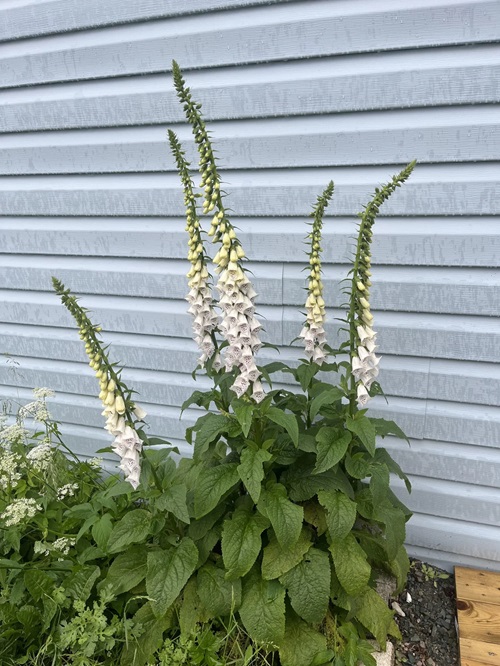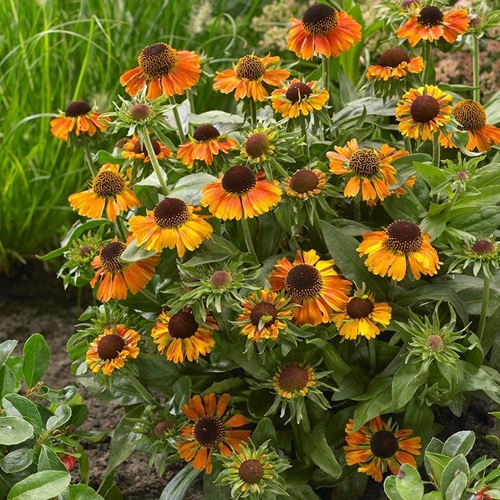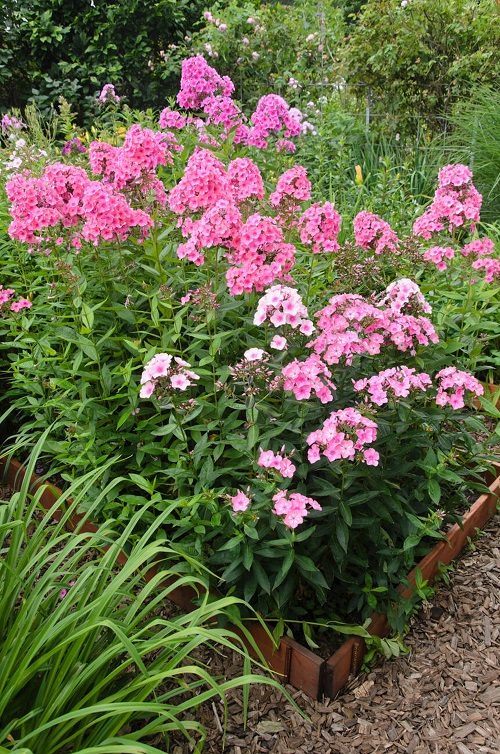We’ve curated a list of the best low-maintenance Perennials That Come Back Every Year for endless flowers!
Whether in warm or cold climates, these beautiful perennials come back every year and bloom season after season, never letting your garden run dry! With flowers that last forever, our picks are super easy to grow and maintain. Let’s dig in!
Popular Perennials That Come Back Every Year
1. Daylily
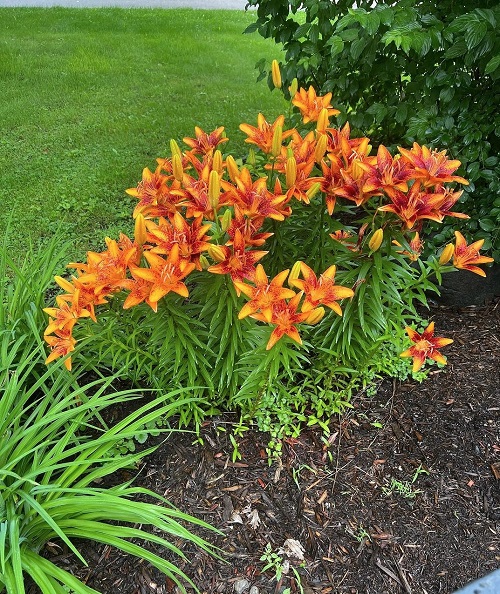
Botanical name: Hemerocallis
USDA Zones: 3-9
Daylilies are clump-forming perennials with fragrant, edible blooms native to Asia and central Europe. They are highly salt-tolerant and easy to grow. With numerous varieties to choose from, you can combine cultivars that bloom all the way from spring through fall!
These plants grow well along banks, slopes, rock gardens, in borders or containers, or at tree bases. They become dormant during the winters and lose all the foliage; however, they will gloriously return in the spring.
2. Chrysanthemum
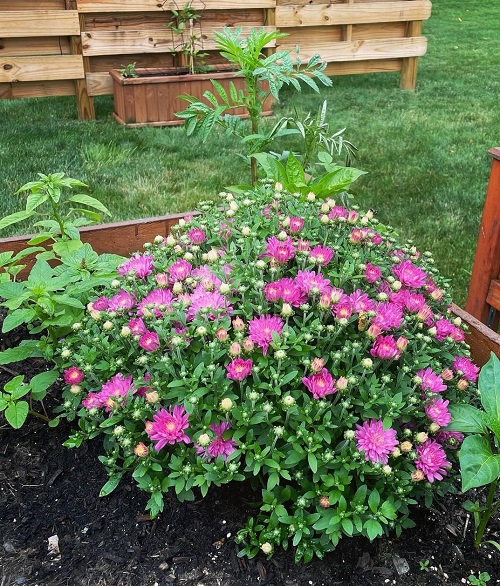
Botanical name: Chrysanthemum species
USDA Zones: 5-9
Chrysanthemums are the most awaited spring flowers. They come in various colors—red, pink, white, yellow, and orange. Mums require more care than other plants and need regular pruning and fertilizers to flourish, but it’s worth it!
Keep up with the pruning and pinching before the peak blooming period starts for the best display of flowers!
3. Purple Coneflower

Botanical name: Echinacea purpurea
USDA Zones: 3-9
This North American endangered native wildflower is especially cherished for its value to wildlife and biodiversity. Its nectar-filled pink to purple blooms attract pollinators like butterflies, hummingbirds, and bees, while birds and other creatures feed on its seeds.
These prolific self-seeders can withstand heat, drought, and cold weather. Coneflowers are perfect landscaping plants that prefer well-drained, moist, loamy soil but can adapt to all types. Remember to leave some seedheads intact during winter for birds to feed on!
4. Peony
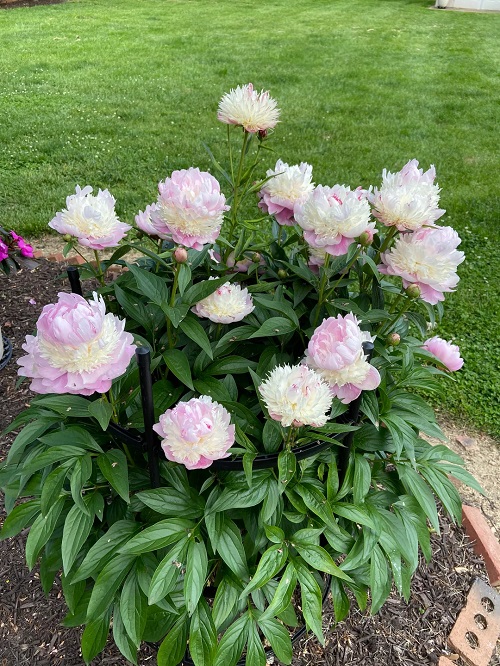
Botanical name: Paeonia hybrids
USDA Zones: 3-8
These long-lived perennials with fragrant spring blooms in pink, red, white, and yellow can live for decades! Preferring the cool weather of zones 5-8 that meets their chilling needs, if you’re growing peonies in warmer zones, do not mulch them in winter.
With blooms lasting over a week, peonies take time to establish and may take up to two years to flower. They thrive in full sun with afternoon shade, well-draining, fertile soil, and ample watering.
5. Sedum

Botanical name: Sedum species
USDA Zones: 3-9
Sedum is a succulent perennial with fleshy, flat, rounded leaves appearing in myriad hues, shapes, and sizes. The plant produces star-shaped blooms in shades of white, gold, burgundy, pink, purple, and even green from spring to fall.
It has an upright growth habit and works well in mixed borders, rock gardens, slopes, pathways, versatile landscapes, and as a houseplant. Most species need ample dappled sunshine to thrive.
While the leaves of this beauty tend to fall off quickly, the fallen leaves can grow into a new plant. Here are the best varieties.
6. Siberian Iris
Botanical name: Iris sibirica
USDA Zones: 3-8
Siberian Iris is a spring and summer-blooming perennial native to Central and Eastern Europe. It needs a period of chill during winter to establish itself; in regions with cold winters, plant it in the fall.
Sporting grass-like foliage with multi-colored leathery blooms, Siberian Iris needs ample sunlight, moisture, and fertile, organically rich, evenly moist soil to flourish. These blooms work well for a cut flower garden, as well as for decorative bouquets and arrangements.
7. Veronica
Botanical name: Veronica
USDA Zones: 3-9
Veronica is a gorgeous perennial with upright, spiky clusters of white, purple, pink, and blue blooms. It flowers from early summer to the end of the fall season. New seedlings emerge from dried, fallen blooms, and flowers return year after year.
A robust self-seeder, the plant needs full sun for at least six hours daily to flourish. It is perfect for containers, borders, mass plantings, and vertical accents in landscapes. Don’t confuse it with salvia, though.
8. Astilbe
Botanical name: Astilbe x arendsii
USDA Zones: 3-9
Native to China, Japan, and Korea, astilbe is a popular perennial with bright floral plumes and attractive fern-like foliage. The flowers bloom from late summer to the end of the fall season.
Perfect for bouquets, floral arrangements, and decorations, astilbe is well-suited for shade gardens with ample moisture.
9. Aster
Botanical name: Aster
USDA Zones: 4-10
Asters have pretty, daisy-like flowers in many colors. They are easy to grow and maintain. The flowers tend to bloom from summer to fall, making it a great, colorful addition to the garden.
Asters prefer to thrive in full to partial sunlight; some species are highly drought-tolerant.
10. Yarrow
Botanical name: Achillea millefolium
USDA Zones: 3-9
This hardy perennial can handle hot and dry conditions but dislikes soggy soil. The creamy white to apricot and pink-hued flowers appear in mid-to-late summer and attract pollinators to your garden.
Yarrow is a popular garden perennial that comes back every year and is also resistant to deer and rabbits. It is also a good weed that makes a great fertilizer.
11. Hosta
Botanical Name: Hosta plantaginea
USDA Zones: 3-9
Hostas are great for adding beautiful, leafy perennials to your garden. They grow well in shady areas, provide good ground cover, and come in many different looks and colors. They can be planted in the ground or in pots, especially in unpopular spots with less sunshine.
While they’re loved for their green leaves, their pink and white flowers are pretty swell, too! Attracting crucial pollinators like bees, pick these variegated ones for your garden.
12. Perennial Sage
Botanical Name: Salvia x digenea
USDA Zones: 3-10
This hybrid salvia family member thrives as a perennial in cold mountainous regions. It produces tall, fragrant clusters of tiny white flowers in pink, blue, and purple in summer and spring that attract bees, birds, and butterflies.
Highly resilient and fuss-free, this plant sits well in containers, mixed borders, garden beds, and drought-tolerant landscapes.
13. Clematis
Botanical Name: Clematis
USDA Zones: 3-9
Clematis is a perennial climbing plant with bright purple, pink, or blue flowers. It looks beautiful when it grows along a fence, trellis, or pergola. The plant blooms twice a year—first in early summer and then again in late summer or fall.
It prefers full sun and comes in many beautiful varieties.
14. Daffodils
Botanical Name: Narcissus
USDA Zones: 4-8
Just as you ready yourself for winter to end and spring to begin, these beautiful yellow daffodils start to unfold. They also offer nectar to bees and other pollinators. Daffodils will bloom in spring a second time if you deadhead the top portion of the seed stem.
With flowers that follow the sun, daffodils aren’t picky about soil. You’ll get flowers from late winter to early spring when other plants are dormant.
15. Baby’s Breath
Botanical Name: Gypsophila paniculata
USDA Zones: 3-9
For long-lasting, delicate blooms in pastel pink and white hues, this is the perennial to go for! Often used by florists as a filler plant, its bushy stems and hundreds of tiny blooms pair well with hydrangeas and roses.
Baby’s breath is easy to grow and flourishes in dry climates in soil with good drainage. The flowers appear in late spring and early summer.
16. Shasta Daisy
Botanical Name: Leucanthemum x superbum
USDA Zones: 4-9
Shasta daisies are short-lived clump-forming perennials with white-yellow blooms from late spring to fall. To push out more and recurring flowers in a season, remember to deadhead spent blooms!
These flowers need average to dry soil and full to partial sun to thrive. They are perfect for butterfly gardens, perennial borders, containers, and cut flowers.
17. Hydrangea
Botanical Name: Hydrangea
USDA Zones: 3-9
Hydrangeas are loved for their big, showy pink, lavender, blue, and white flowers. They are also cherished for their ability to change colors with the pH of the soil. For best growth, plant them in spring after the last frost or in the fall before the first frost.
They prefer partial sunlight and bloom from summer to fall. Don’t forget to deadhead them the right way.
Perennials That Come Back Every Year
18. Columbine
Botanical name: Aquilegia
USDA Zones: 3-8
Producing gorgeous bell-shaped white, pink, scarlet, and lavender blooms that last for nearly a month, columbine is a useful perennial to fill your garden between early spring and summer!
Once the flowers fade, the plant becomes an attractive ground cover, and later, when the foliage deteriorates, it can be cut to the ground. While short-lived, it is an aggressive self-seeder perfect for a native pollinator garden.
19. Black-Eyed Susan
Botanical name: Rudbeckia hirta
USDA Zones: 3-8
These are fast-growing, upright, branching biennial or short-lived perennials native to the eastern United States. Black-eyed susans bloom in the first year after being planted from seed in early spring.
They produce flowers with bright yellow or orange petals with a dark center. Check out varieties like sweet black-eyed susans and goldstrum for your garden. And explore these black-eyed susan lookalikes if you’re a fan.
20. Gladiolus

Botanical name: Gladiolus
USDA Zones: 7-10
Sword lily is distinguished by long, sword-shaped green leaves and funnel-shaped flowers on slender stalks that open one at a time from bottom to top. It thrives in full sun and well-drained soil and can adapt to most soil types.
You can easily propagate gladiolus from tender bulbs, which must be dug up in the fall after the end of flowering and replanted every year. Here’s more info about their growth.
21. Roman Chamomile
Botanical name: Chamaemelum nobile
USDA Zones: 4-9
Chamomile is a low-growing herb native to Europe and western Asia. It blooms in the summer and sometimes even through the entire fall season. As winter kicks in, this amazing border plant becomes dormant, and the plant eventually dries.
However, you can propagate it from seeds in early spring. The delicate flowers are beautiful and make a great herbal tea ingredient!
22. Foxglove
Botanical Name: Digitalis purpurea
USDA Zones: 4-9
Foxgloves are tall, elegant flowers making a comeback these days, lending nostalgia and stunning funnel-shaped vertical interest to the garden. Considered either biennial or short-lived perennials, they quickly drop seeds that become baby plants in the coming seasons.
You’ll have to be patient with these as their flowers appear in the second year. But once they spread, you’ll have to deadhead and cut back to keep their spread in check. Some tall varieties also need support.
23. Helenium
Botanical Name: Helenium autumnale
USDA Zones: 3-8
Also known as false sunflower and sneezeweed, this sun-loving perennial from the aster family grows in clumps with an upright growth habit and lance-shaped foliage. It can reach 3-5 feet tall, and its nectar-filled blooms attract bees and butterflies.
Give it full sun and rich, moist, fertile soil with a slightly acidic pH, and it’ll produce beautiful flowers year after year.
24. Phlox
Botanical Name: Phlox
USDA Zones: 2-9
Blooming from summer to fall, this easy-to-grow perennial comes back every season. We recommend the creeping phlox (Phlox subulata) or autumn phlox (Phlox paniculata) for your garden. Both have pretty, scented flowers that attract various pollinators.
Phlox plants need full sun but can tolerate some shade. It is not drought-tolerant, so plant it in well-draining, moist, fertile soil.
25. Tulips
Botanical Name: Tulipa
USDA Zones: 3-8
Tulips are some of the easiest flowers to grow, and they are obsessed over for their unique hues, patterns, shapes, and myriad floral scents. Appearing in red, pink, purple, yellow, and wild patterns, plant its bulbs in the fall for early spring blooms.
Tulips may only grow for a few years, so plant new bulbs afterward. Give them partial to full sunlight, and do this after they bloom; you’ll be surprised by the results.


